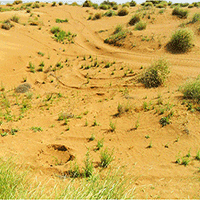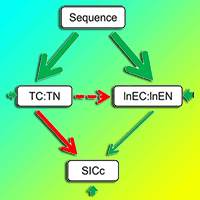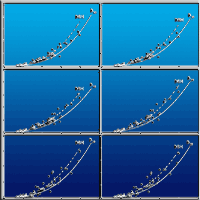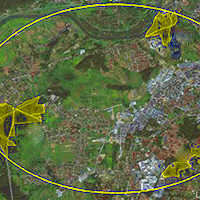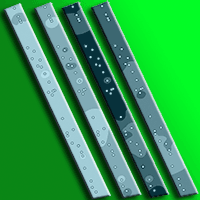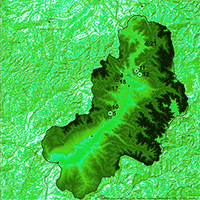
Effects of black locust and black pine on extremely degraded sites 60 years after afforestation - a case study of the Grdelica Gorge (southeastern Serbia)
Sara Lukić (1) , Damjan Pantić (1), Snežana Belanović Simić (1), Dragan Borota (1), Bojan Tubić (2), Matilda Djukić (1), Danijela Djunisijević-Bojović (1)
iForest - Biogeosciences and Forestry, Volume 9, Issue 2, Pages 235-243 (2015)
doi: https://doi.org/10.3832/ifor1512-008
Published: Aug 22, 2015 - Copyright © 2015 SISEF
Research Articles
Abstract
The selection of tree species can affect the success of afforestation in the rehabilitation of degraded forest sites and forest restoration. In general, black locust (Robinia pseudoacacia L.) and black pine (Pinus nigra Arnold.) represent the most commonly used species in the afforestation of soils that have been degraded by erosion. As far as the extent of the ameliorative effects of black locust and black pine are concerned, it was found that they may play an important role in the selection of species for the afforestation of extremely degraded sites. This study is aimed at determining the potential of black locust and black pine to affect several soil properties, erosion control and C stock, thus creating favourable site conditions for the restoration of previous forest vegetation. This research was conducted in the Grdelica Gorge in south east Serbia, where eight sample plots with an average size of 0.47 ha were established 60 years ago on terrain afforested with black locust and black pine. In each sample plot, we measured the diameter at breast height of all black locust and black pine trees, and the height of 10 black locust and 10 black pine trees in each diameter class. In addition, samples of mineral soil (from depths of 0-5, 5-10 and 10-20 cm) were taken at 4 randomly selected soil profiles in each sample plot, and 8 samples of litter (30 × 30 cm) were also collected. Additionally, laboratory analyses of the physical and chemical properties of the soil and litter were performed in 2 replicates. The obtained results showed that: (1) at the 0-5 cm depth, there was no statistically significant difference in the reaction of the soil solution, although a significant difference in the reaction of the soil solution between the soils under the two species was observed at soil depths greater than 5 cm; (2) there was a significantly higher N content under black locust in the 0-5 cm soil layer; (3) the reduction of soil loss under black locust is statistically significant in all observation periods; (4) black pine is more efficient in C storage. Our results demonstrate that black locust has the potential to improve soil properties and reduce soil loss caused by erosion, while its favourable impact does not decrease over time, making it more suitable for afforestation on degraded land in the examined area.
Keywords
Afforestation, Black Locust, Black Pine, Soil Properties, Soil Losses, Carbon Stock
Authors’ Info
Authors’ address
Damjan Pantić
Snežana Belanović Simić
Dragan Borota
Matilda Djukić
Danijela Djunisijević-Bojović
University of Belgrade, Faculty of Forestry, Kneza Višeslava 1, 11030 Belgrade (Serbia)
PE “Vojvodinašume“, Preradovićeva 2, 21131, Petrovaradin (Serbia)
Corresponding author
Paper Info
Citation
Lukić S, Pantić D, Simić SBć, Borota D, Tubić B, Djukić M, Djunisijević-Bojović D (2015). Effects of black locust and black pine on extremely degraded sites 60 years after afforestation - a case study of the Grdelica Gorge (southeastern Serbia). iForest 9: 235-243. - doi: 10.3832/ifor1512-008
Academic Editor
Tamir Klein
Paper history
Received: Nov 24, 2014
Accepted: May 01, 2015
First online: Aug 22, 2015
Publication Date: Apr 26, 2016
Publication Time: 3.77 months
Copyright Information
© SISEF - The Italian Society of Silviculture and Forest Ecology 2015
Open Access
This article is distributed under the terms of the Creative Commons Attribution-Non Commercial 4.0 International (https://creativecommons.org/licenses/by-nc/4.0/), which permits unrestricted use, distribution, and reproduction in any medium, provided you give appropriate credit to the original author(s) and the source, provide a link to the Creative Commons license, and indicate if changes were made.
Web Metrics
Breakdown by View Type
Article Usage
Total Article Views: 52204
(from publication date up to now)
Breakdown by View Type
HTML Page Views: 43565
Abstract Page Views: 3195
PDF Downloads: 4083
Citation/Reference Downloads: 29
XML Downloads: 1332
Web Metrics
Days since publication: 3760
Overall contacts: 52204
Avg. contacts per week: 97.19
Citation Metrics
Article Citations
Article citations are based on data periodically collected from the Clarivate Web of Science web site
(last update: Mar 2025)
Total number of cites (since 2016): 14
Average cites per year: 1.40
Publication Metrics
by Dimensions ©
Articles citing this article
List of the papers citing this article based on CrossRef Cited-by.
References
Dendrometrija [Dendrometry]. Univerzitet u Beogradu, Šumarski fakultet, Belgrade, Serbia, pp. 556. [in Serbian]
Gscholar
Decomposition of black locust and black pine leaf litter in two coeval forest stands on Mountain Vesuvius and dynamics of organic components assessed through proximate analysis and NMR spectroscopy. Soil Biology and Biochemistry 51: 1-15.
CrossRef | Gscholar
Systems of afforestation and grass cover in erosion control. Faculty of Forestry, University of Banja Luka, Republic of Srpska, Bosnia and Hertzegovina, pp. 402.
Gscholar
Vodna i eolska erozija zemljišta [Water and wind soil erosion]. Acta Biologica Jugoslavica, Unija bioloških naučnih društava Jugoslavije, Belgrade, Serbia, pp. 440. [in Serbian]
Gscholar
Engineering of torrents and erosion. Journal of Construction, Special Issue, Belgrade, Serbia, pp. 292.
Gscholar
Soil quality - Determination of total nitrogen, modified Kjeldahl method. International organization for standardization, Geneva, Switzerland, pp. 4.
Gscholar
Soil quality - Determination of dry bulk density. International organization for standardization, Geneva, Switzerland, pp. 10.
Gscholar
Soil quality - Determination of particle size distribution in mineral soil material. Method by sieving and sedimentation. International organization for standardization, Geneva, Switzerland, pp. 34.
Gscholar
Dendrologija [Dendrology]. Univerzitet u Beogradu - Šumarski fakultet, Belgrade, Serbia, pp. 713. [in Serbian]
Gscholar
Die Bodenazidität [The soil acidity]. Springer Verlag, Berlin, Germany, pp. 363. [in German]
Gscholar
Erosion and torrent control in Serbia: hundred years of experiences. In: Proceedings of the International Conference “Erosion and Torrent Control as a Factor in Sustainable River Basin Management” (Kostadinov S, Bruk S, Walling D eds). Belgrade (Serbia), 25-28 Sep 2007. University of Belgrade, Faculty of Forestry, Belgrade, Serbia, pp. 1-14.
Gscholar
Research and development priorities for carbon sequestration in forest soils. In: “The Potential of US Forest Soils to Sequester Carbon and Mitigate the Greenhouse Effect” (Kimble JM, Heath LS, Birdsey RA, Lal R eds). CRC Press, Boca Raton, FL, USA, pp. 409-420.
Gscholar
Organic matter accretion, decomposition and mineralisation. In: “Management of Soil, Nutrients and Water in Tropical Plantation Forests” (Nambiar EKS, Brown AG eds). Australian Center for International Agricultural Research (ACIAR), Canberra, ACT, Australia, pp. 443-480.
Gscholar
Basic environmental conditions. In: “The selection of species for reforestation and amelioration in central Serbia” (Tomić Z, Rakonjac Lj, Isajev V eds). Institute of Forestry, Belgrade, Serbia, pp. 17-63.
Gscholar
Meterorološki godišnjak [Meteorological annual reports]. Republic Hydrometeorological Office of Serbia, Belgrade, Serbia. [in Serbian]
Gscholar
Reservoir sedimentation and hydrological effects of land use change - Case study of the experimental Dičina river watershed. Carpathian Journal of Earth and Environmental Sciences 8 (1): 91- 98.
Gscholar
Bodenkunde. Untersuchungsmethoden und ihre Anwendungen [Soil Science. Research methods and their applications]. Springer, Berlin, Germany, pp. 614. [in German]
Gscholar
Research afforestation at Grdelica gorge. Šumarstvo 12: 741-756. [in Serbian]
Gscholar
Svojstva drveta [The Properties of Wood]. Univerzitet u Beogradu - Šumarski fakultet, Belgrade, Serbia, pp. 97-108. [in Serbian]
Gscholar
Pedološko-agrohemijske osobine i stanje erozije zemljišta Grdeličke klisure i Vranjske kotline [Pedological and agrochemical soil properties and the state of soil erosion in Grdelica gorge and Vranjska valley]. Soil Science Institute, Belgrade, Serbia, pp. 200. [in Serbian]
Gscholar
Comparison of EPM and PSIAC models in GIS for erosion and sediment yeld assessment in a semi-arid environment: Afzar Catchment, Fars Province, Iran. Journal of Asian Sciences 27: 585-597.
Gscholar
Comparison of litterfall production and leaf litter decomposition an exotic black locust plantation and an indigenous oak forest near Yan’an on the Loess Plateau, China. Forest Ecology and Management 241: 84-90.
CrossRef | Gscholar
Šumska fitocenologija [Forestry phytocenology]. Univerzitet u Beogradu - Šumarski fakultet, Belgrade, Serbia, pp. 261. [in Serbian]
Gscholar
Uticaj šumskih ekosistema na životnu sredinu [The impact of forest ecosystems to the environment]. Univerzitet u Beogradu - Šumarski fakultet, Belgrade, Serbia, pp 451. [in Serbian]
Gscholar
World reference base for soil resources 2006 - a framework for international classification correlation and communication. IUSS International Working Group, World Soil Resources Reports 103, FAO, Rome, Italy, pp. 128.
Gscholar
Effect of different vegetation types on soil erosion by water. Acta Botanica Sinica 45 (10): 1204-1209.
Gscholar
Response of soil erosion to land use change with particular reference to the last 200 years (Julian Alps, Western Slovenia). Revista de geomorfologie 11: 39-47.
Gscholar



